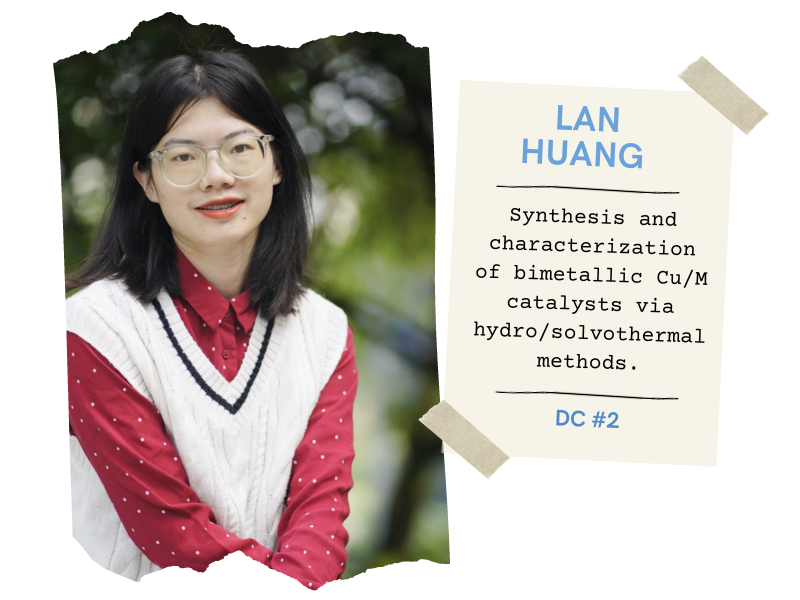
Born in Yibin, China in 1993. She completed her bachelor’s degree in chemistry at China West Normal University(2011 – 2015). She then continued her academic journey at the same institution, completing her Master of Science in Analytical Chemistry(2015-2018), where her research focused on the exploration and development of high-performance electrocatalysts with unique structures and compositions. In 2018, Lan joined Chongqing Technology and Business University, initially serving as a research assistant and later being promoted to research associate in 2020. Her work at the university primarily involved the development of electrocatalysts for water splitting. Moreover, she has also been actively involved in several international projects related to organic photodetectors and electrochemical detection of biomarkers in various diseases.

Synthesis and characterization of bimetallic Cu/M catalysts via hydro/solvothermal methods.
Project objectives: Aim of the project is to synthesize and characterize bimetallic Cu/M catalysts with designed chemical composition and morphology viahydro/solvothermal methods.To tune the activity, selectivity and stability of catalysts by changing their physical/chemical properties
Working context: DC#2 will be enrolled at POLITO and hosted at IIT (Italian Institute of Technology) under the supervision of Prof. F.Pirri. Secondment periods are also provided at VITO (Belgium) for a 3 months training on GDEs’ fabrication and their tests in a zero-gap flow cell, under the supervision by Dr. D. Pant; at the ESRF (France) for a 2 months training on characterization of the best performing Cu/M samples with in-situ synchrotron radiation spectroscopies, supervised by Dr. P.Glatzel ; and finally at APRIA (Spain) for a 2 months training on CO2RR electrolyser design and construction, supervised by Dr. P.M. Gómez.
Expected outcome:
- Synthesis of various bimetallic Cu/M materials with different secondary metals and different Cu:M atomic ratios.
- Identification of thesecondary metal and its best Cu:M ratio that leads to the best performance for the desired CO2RR products.
- Understanding of the physical/chemicalproperties-performance correlation of the Cu/M catalysts (with contributions from WP2).
- Optimization of the selected Cu/M catalyst by changing thepreparation conditions

